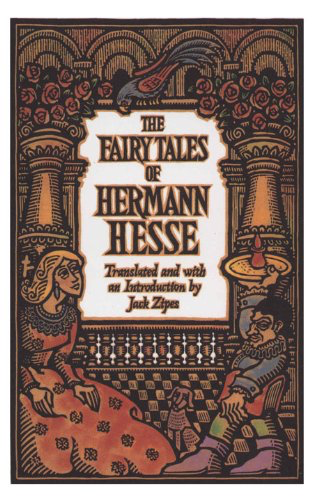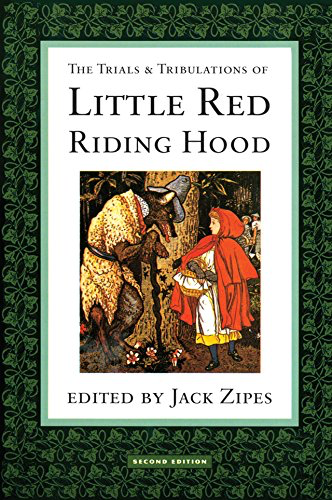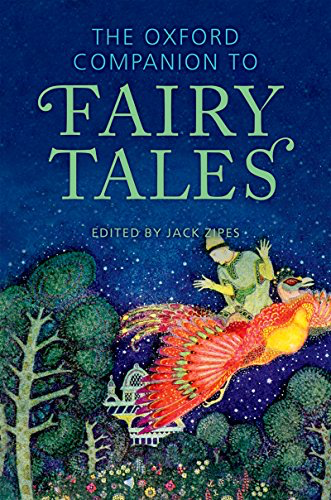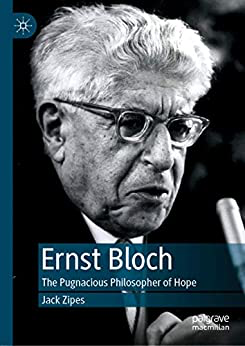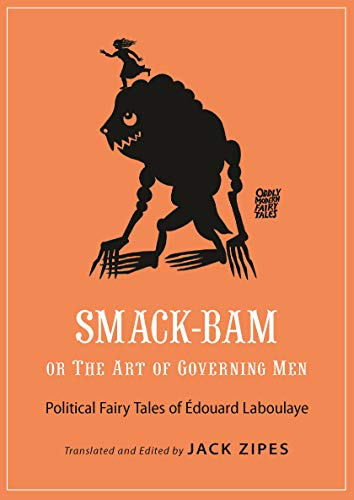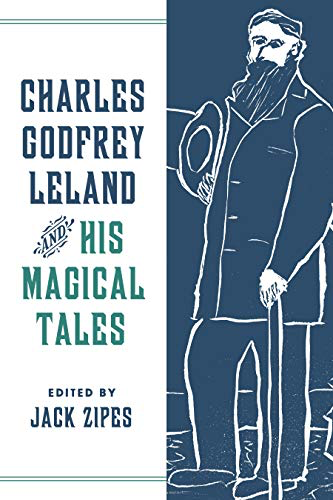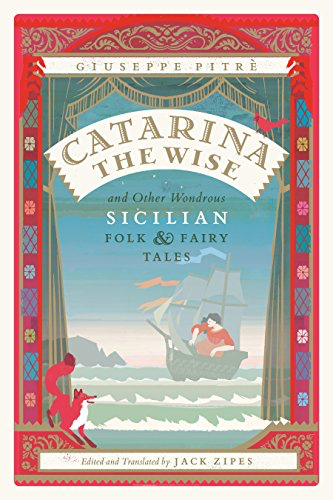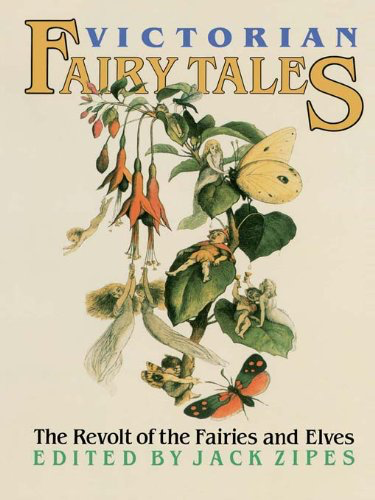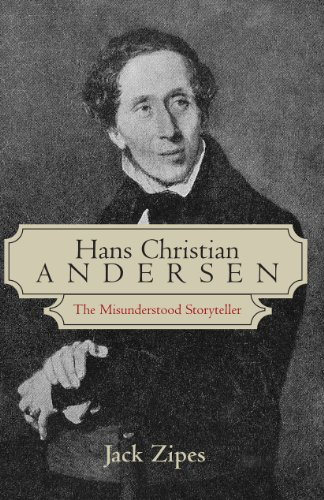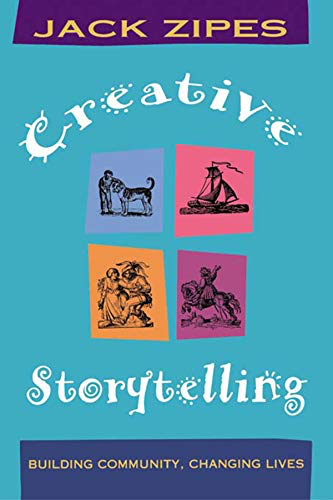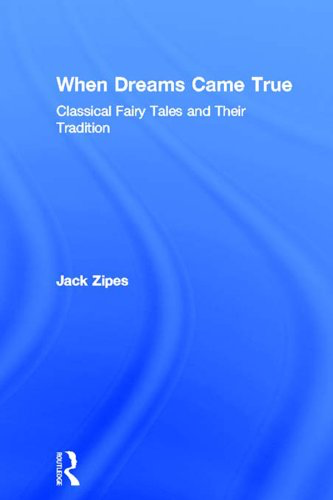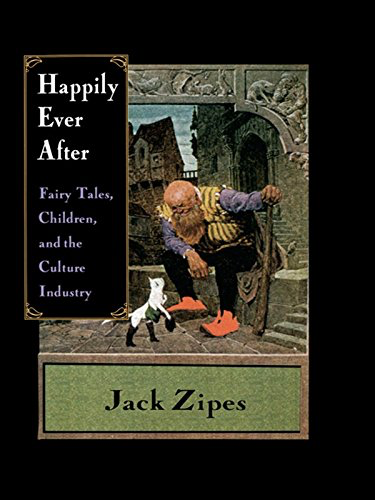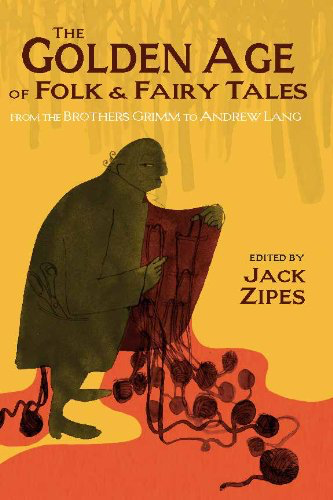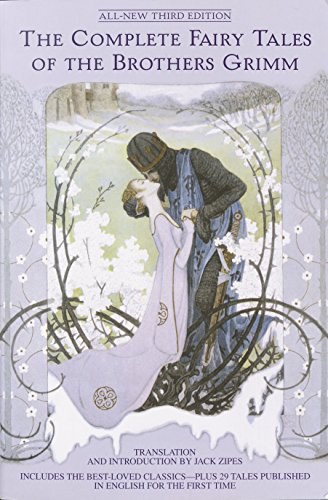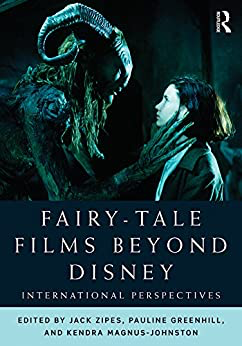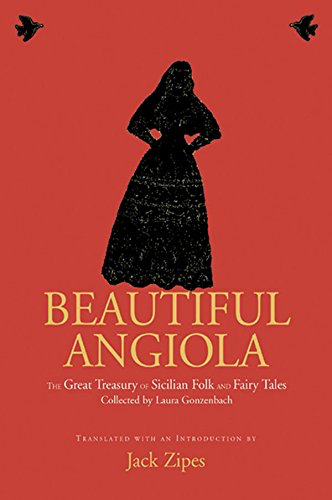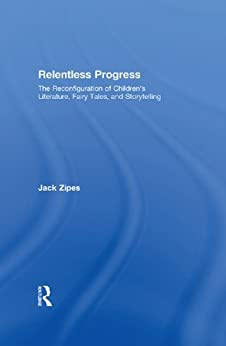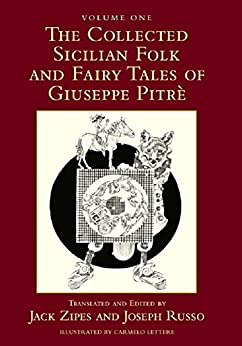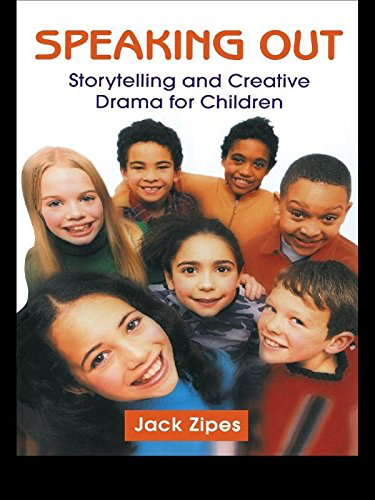Jack Zipes and the Many Subversions of the Fairytale
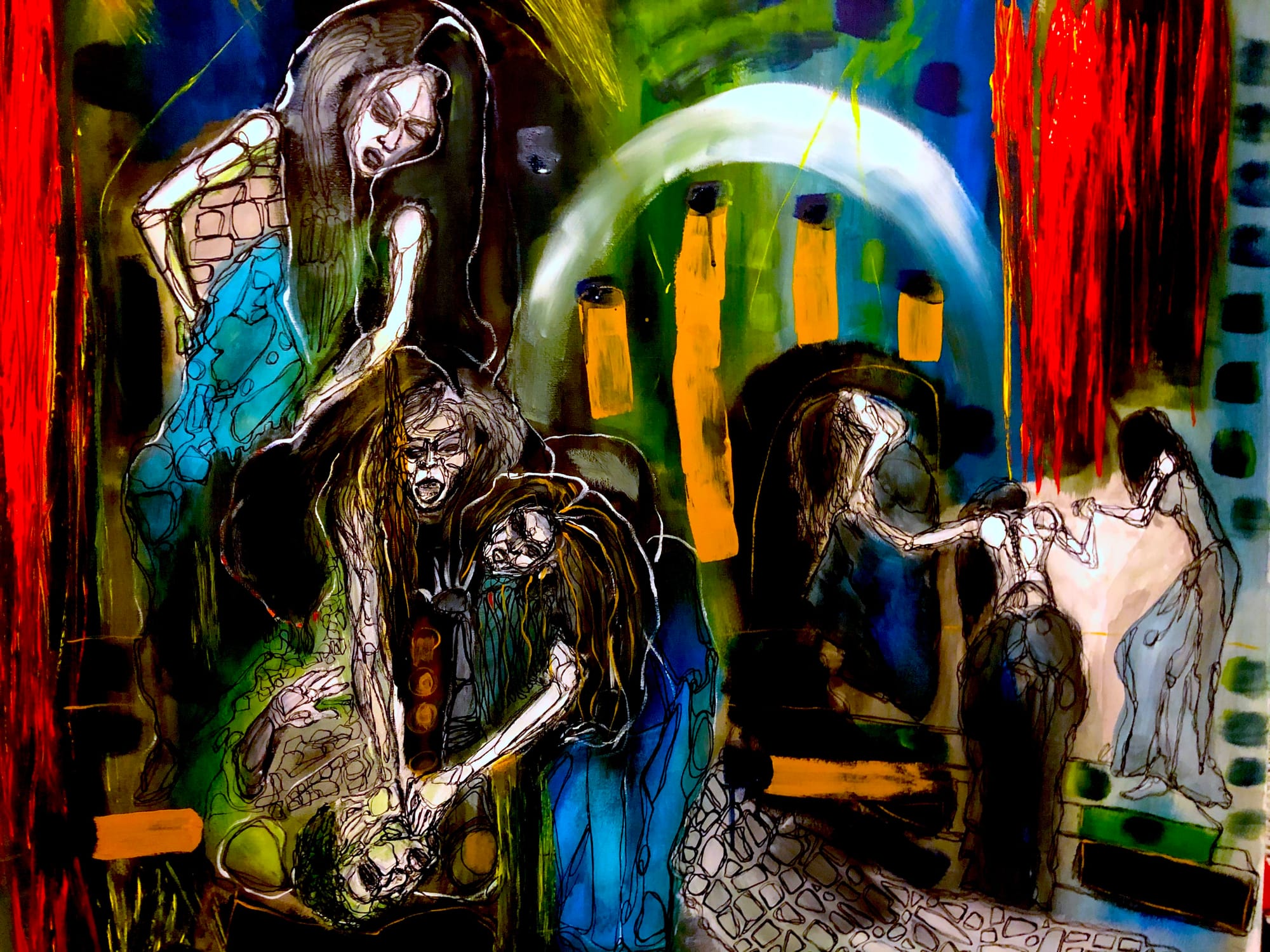
Interview by Richard Marshall

Jack Zipes is a professor emeritus of German, comparative literature, and cultural studies, who has published and lectured on German literature, critical theory, German Jewish culture, children's literature, and folklore. In the latter part of his career he translated two major editions of the tales of the Brothers Grimm and focused on fairy tales, their evolution, and their social and political role in civilizing processes. According to Zipes, fairy tales "serve a meaningful social function, not just for compensation but for revelation: the worlds projected by the best of our fairy tales reveal the gaps between truth and falsehood in our immediate society." His arguments are avowedly based on the critical theory of the Frankfurt School and more recently theories of cultural evolution.

3:16: You’re a leading expert on folk and fairy tales. What got you interested in making them your life’s interest, and so that we get a rough idea of the geography, what characterizes these kinds of stories and makes them distinctive? I guess one thing that’s clear from reading your work is that they’re not, as some might think, primarily for children are they?
Jack Zipes: Well, I don’t think folk and fairy tales are really my life’s interest. Certainly, as a child, I loved to hear them, read them, and see fairy-tale films. I was a passionate reader and used to go to a library about a quarter of a mile from our house, sit on the floor, and read dog and sports stories along with fairy tales. All this began when I was about seven. When I went to college in 1955, Kafka (not to mention Camus and Sartre) had a powerful influence on me, and in graduate school – after spending two years studying in Germany – I wrote a dissertation published as a book with the title The Great Refusal: Studies of the Romantic Hero in German and American Literature.
My strong interest in extraordinary, creative writers of fairy tales like Wackenroder, Tieck,.Novalis, Eichendorff, Chamisso, and E. T. A. Hoffmann along with Poe, Melville, and Hawthorne was evident as well as a mind-breaking interest in Herbert Marcuse, whose books were my first introduction to the Frankfurt School of Critical Theory. Marcuse’s Eros and Civilizationand One-Dimensional Manaltered my thinking about society, philosophy, and literature. Notice, I have not mentioned the Brothers Grimm, Charles Perrault, or Hans Christian Andersen, even though I was familiar with their works. I think I was searching for tales in which the major protagonists resisted conformity and criminality. For me, society and the civilizing process always had to be questioned, resisted, and radically reformed.
By the time I began teaching at NYU in 1967 – after receiving my PhD. From Columbia in 1965, I spent two years at the University of Munich as an assistant professor for American literature – I was politically active and belonged to various progressive organizations like SPD. Teaching for me was by then a political act, and I experimented with all kinds of pedagogical methods to provoke my students – and myself! It was during this time that I realized that folk and fairy tales could be used in unusual and different ways and that most of them had relevant substance that I could use for discussions with the students and activate them to think out of the box. In 1970, when students were killed at Kent State University and Jackson State, I was asked by many different NYU organizations to lead the strike committee. I accepted with the condition that we would rotate positions on the committee. Unfortunately for me, this did not happen. So, for two weeks I met with the committee, but also with the president of the university who threatened me with blacklisting and other punishments for leading the strike against the Vietnam War and also the American government’s seditious plans,.
It is a long story, and I cannot tell you everything except to say, this was the turning point in my life’s interest: after being black listed for two years, I managed to obtain a position at the University of Wisconsin-Milwaukee as associate professor of German, and with the ebbing of the protests and the war in Vietnam, with the decline of student’s interest in changing the world, especially privileged students, I realized that I had to work more with children before anything else in the world because I saw people of my age and younger returning to “normalcy” and living comfortable lives during the 1970s. It was thus during the 1970s that I began combining work in public schools and the university because I felt the socialization of children was a primary cause of the dog-eat-dog ideology of America and the brutal competitive manner in which we treat one another. The socio-political history of the evolution of folk and fairy tales led me to develop methods of storytelling and teaching that gave me hope that little people could speak truth to power. It may be difficult to understand, but I do think that my great interest in folk and fairy tales led to many other interests, and yet, perhaps you might call these tales my life’s interest.
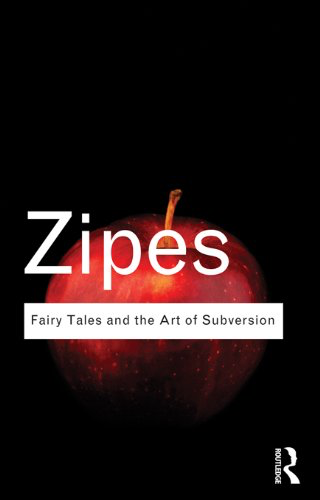
3:16: One of the things you’ve done is explored both their origins and then the mutations that have led them to where they’ve ended up. So if we start with origins, you’ve used both elements of the social and natural sciences to answer the question of where these sorts of stories began. Can you sketch for us where these stories came from and why they take the forms they do and how Dawkins notion of the meme is useful?
JZ: Since I had never studied folklore and since my background in Marxist philosophy and history was very weak, I had to self-educate myself from 1965 to the present. I also began to learn all about other cultures and languages. I am now fluent in German, French, and Italian and can read Spanish. I am very curious in a positive dilletantish way. I shall use any book that can help me understand the conditions of the world and in the world to develop my own methods of analysis and interpretation. It took me a long time to grasp the significance of the relationship between the oral and literary fairy tale and how and why fairy tales became “memetic.” All this happened of all places in Milwaukee, where I spent fifteen learning years and testing my critical approach to folk and fairy tales, children’s literature, psychology, philosophy, and aesthetics. These were the years when I co-founded the radical journal New German Critique and was at the center of the journal and learned from my co-editors, who unfortunately deceived and disappointed me later when I left Milwaukee. But that is another story.
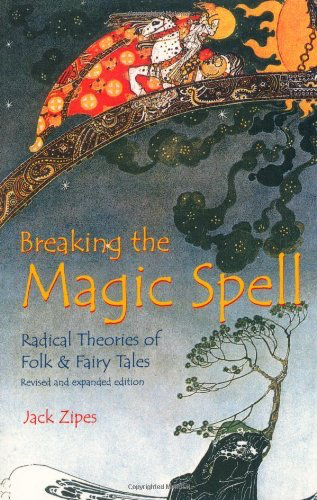
The better story is how I began to sharpen my critiques, and you can see this in my first major study, Breaking the Magic Spell: Radical Theories of Folk and Fairy Tales (1978) This caused traditional folklorists to moan and groan and complain that folk and fairy tales cannot be understood ideologically, and some complained that Marxism of any kind could not provide any kind of method to grasp the nature of folk and fairy tales. None of this bothered me. What bothered me was the lack of understanding these folklorists had when it comes to historical materialism. Moreover, I was also outraged by Bruno Bettelheim’s pretentious and ignorant psychiatric analysis of fairy tales. His book, The Uses of Echantment(1976), was sort of a bestseller, and it was indicative of how folklorists and numerous other scholars were ready to bow to unproven theories without doing critical research. I am citing all this because my turn to memetics (a tested theoretical and controversial theory) is linked to the way I do research – constant testing and working with children, teachers, psychologists, and philosophers.
Richard Dawkins published The Selfish Gene in 1976, and in the last chapter of this book, he suggested that we are not only heavily influenced by our genes, but there are also memes in our brains that may strongly influence or affect us. Dawkins believes that memes are bits of information that we store in our brains because they are somehow relevant for our existence and survival. Not everything can become a meme. A meme sticks in our brains because its information is vital for the evolution and survival of the human species. In the case of the folk and fairy tale, a tale like “Little Red Riding Hood,” which, more than likely, was told orally thousands of years ago becomes memetic because it contains important information about how young girls and women are violated or raped so that they might protect themselves. It is a so-called warning tale, and the numerous versions this tale ranging from comedy to tragedy comment on sexism and gender roles. I could give numerous examples of memetic fairy tales.
What is important to bear in mind is that not all folk and fairy tales are memetic. Only particular tales that are involved in evolutionary civilizing processes are significant and stick. Therefore, much of my work, even before I was familiar with memetics, has dealt with grounding the history of tales, that is, studying their origins, development, and causes in all the strains of a particular tale type. I have continued to do this in all of my theoretical books up to this day, and though there are faults in the analyses of many social scientists with regard to memetics, there are now a few hundred or more books and essays that take memetics seriously and may one day offer proof that memes do exist in various forms.
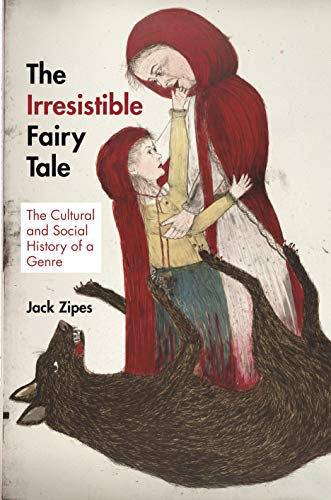
3:16: Tell us a little about the importance of the French fairy storytellers of the 1690s. The interesting feature of this – and you stress this throughout your studies – is how oral culture mixes with writing, but the oral culture comes first isn’t it? So what did the writing change?
JZ: During the 17thcentury. aristocratic women and wealthy bourgeois women began to rebel somewhat against the conditions that prevented them from attending universities and practicing professions. Some of the remarkable women began holding salons in their homes and demonstrating how intelligent and gifted they were. Among the “rituals,” storytelling played a great role, and among the great writers and storytellers was Mme Catherine d’Aulnoy, who published several books in the 1690s. She was the one who named her tales Contes de fees(Fairy Tales or Tales of the Fairies). Basically, all the fairies in her works and in the works of the other female French writers were godlike and referred to the women themselves who were gradually breaking traditions and laws to become autonomous. I recently wrote an introduction to The Island of Happiness: Tales of Madame D’Aulnoy. Drawings by Natalie Frank. Translated and Introduced by Jack Zipes. Princeton: Princeton University Press, 2021. Here is a part of the introduction that explains the importance of the French women writers:
'Though it is impossible to fix a date for the rise of the literary fairy tale in France and the exact reasons why d’Aulnoy was attracted to this genre, its origins can be located in the conversation and games developed by highly educated aristocratic women in the salons that the formed in the 1630s in Paris and that continued to be popular up through the beginning of the eighteenth century. Deprived of access to schools and universities, French aristocratic women began organizing gatherings in their homes to which they invited other women and gradually men in order to discuss art, literature, and topics important to them such as love, marriage, and freedom. In particular, the women wanted to distinguish themselves as individuals who were above the rest of society and deserved special attention. Generally speaking, these women were called précieusesand tried to develop a précieux manner of thinking, speaking and writing to reveal and celebrate their innate talents that distinguished them from the vulgar elements of society. Most important was the emphasis placed on wit and invention in conversation.
The women who frequented the salons were constantly seeking innovative ways to express their needs and to embellish the forms and style of speech and communication that they shared. Given the fact they all had been exposed to folk tales as children that served as models for the occasional lyric and the serial novel, it is not by chance that they turned to the folk tale as a source of amusement. The subject matter of the conversations consisted of literature, mores, taste, love, and etiquette, whereby the speakers all endeavored to portray ideal situations in the most effective oratory style, which would gradually be transmuted into literary forms and set the standards for the conte de féeor what we now call the literary fairy tale.
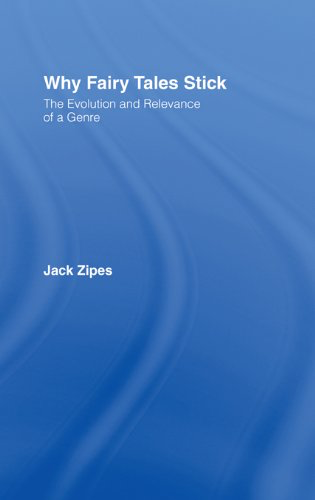
By the 1690s, the “salon” fairy tale became so acceptable that women and men began writing down their tales for publication. Most of the notable writers of the fairy tale learned to develop this literary genre by going to the salons or homes of women who wanted to foster intellectual conversation. D’Aulnoy was a prime figure in the rise of literary fairy tales which were clearly based on the oral tales she had heard as a young girl or read in Giovan Francesco Straparola’s Italian collection, The Pleasant Nights. The transformation of the oral folk tale into a literary fairy tale was not superficial or decorative. The aesthetics that the aristocratic women developed in their conversational games and in their written tales had a serious aspect to it: though they differed in style and content, these tales were all anti-classical and were written opposition to the literary establishment that championed Greek and Roman literature as models for contemporary French writers to follow. Instead, the early French fairy-tale writers used models from French folklore and the medieval courtly tradition. In addition, since the majority of the writers and tellers of fairy tales were women, these tales displayed a certain resistance toward male rational precepts and patriarchal realms by conceiving pagan worlds in which the final say was determined by female fairies, extraordinarily majestic and powerful fairie.
Until the publication of Les contes des fees, no French author had used the term, conte de fée, which is key for understanding the unique quality and appeal of d’Aulnoy’s tales. Translated literally into English, the term means tale about fairies, or, in other words, the fairies were to become the central interest or protagonists of magical tales that were to replace the Greco-Roman myths with their gods and goddesses. Moreover, d’Aulnoy never makes a reference to Christian religions or the Judaeo-Christian tradition. Her tales were totally secular, and the destinies of aristocratic heroes and heroines were determined by the fairies who upheld the moral principles of the French civilizing process. Unwritten and arbitrary, the principles were generally summarized in quaint moral poems at the end of each tale. These poems were the laws of the fairies, and woe to anyone who defied them, even though d’Aulnoy and her friends could not enforce them in reality.
Powerless, d’Aulnoy and many other gifted women authors of fairy tales such as Marie-Jeanne L’Héritier de Villandon, Catherine Bernard, Charlotte Rose de Caumont de la Force, Henriette-Julie de Castelnau, Comtesse de Murat, and Mlle de Lubert discovered their power through the salons and through conceiving fairy tales that announced and pronounced their social views of civility. The aristocratic writers often used the term féeamong themselves and created an atmosphere in the salons in which they could freely exchange ideas that challenged the hypocrisy and immorality of Louis XIV’s court. Of course, they did not direct all their criticisms at the court, but it was clear that their strange metaphorical language and codes, filled by hyperbole and euphemisms, were intended to create utopian narratives in opposition to the status quo.
Of all the women writers, d’Aulnoy was the most critical and judgmental. For example, “Finette Cendron” and “Belle-Belle, or The Chevalier Fortuné” reveal how conspiracies and corruption ran rampant at royal courts, and how courageous young women with integrity could withstand abuse and betrayal to become queens in their own right.
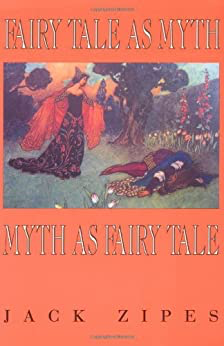
3:16: Baba Yaga seems to be a figure who is of very great importance if we are to comprehend a huge element of fairy stories that tend to have been obscured – the role of women in them, and their feisty, dangerous subversive power. So what is this Baba Yaga character and how does she illustrate your thesis that subversive women are a key strand to fairy stories?
JZ: Baba Yaga, in my mind, symbolizes female power, and she or other extraordinary elderly women, often ruthless and/or demanding. is especially important for testing young women to see if they can be industrious, honest, blunt,,brave, etc. In Germany, she is referred to as Mother Holle. You can find similar witchlike and powerful older women like her all over the world. Some can be brutal if not evil, but for the most part, I see her as an ambivalent “elderly” goddess who tests the character of young women and often helps them to become autonomous.
3:16: I have just reviewed a book that might interest you:Women Writing Wonder: An Anthology of Subversive Nineteenth-Century British, French, and German Fairy Tales edited and Translated by Julie L. J. Koehler, Shandi Lynne Wagner, Anne E. Duggan, and Adrion Dula. (Wayne State U Press). Here is my endorsement:
Finally, a wondrous anthology of fairy tales, based on impeccable research,that honors women writing in the nineteenth century. This collection of German,French, and British fairy tales fills a huge historical gap and reveals how exceptionaland how neglected female writers were and are. In fact, the nineteenth century was a periodin which the fairy tales created by women writers flowered, and these stories can now berediscovered and can be given their due appreciation. It would be very difficult to trace all the neglected women writers from the seventeenth century to the present, but you can rest assured that they contributed to the field of folk and fairy tales. And if you look around you, women are publishing some of the most unusual and subversive tales today. One example is Kate Forsyth in Australia. Already a prolific and fascinating writer, she has also contributed to the feminist movement by publishing anthologies such as Snow White rose Red and Other Tales of Kind Young Women.'
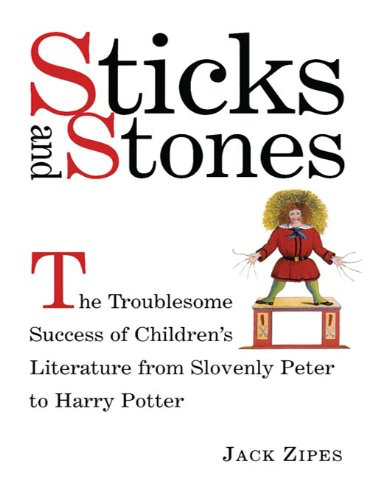
3:16: Why did the European middle classes turn to tales that originated in lower classes in the nineteenth century?
JZ: Simple: Aristocratic and middle class families often had peasant women and nannies from the lower classes. These “nurses” or “midwives” told stories to upper classes that were becoming more and more literate. It was the rise of literacy in the 19thcentury that led to the flowering of the peasant folktales and the literary fairy tales.
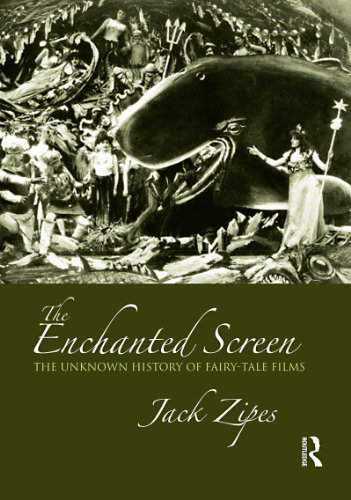
3:16: Looking at the contemporary scene, you argue that it’s women who have taken up the baton once more – is feminism of the 1970s the reason why the worlds of fantasy, fairy tales and so forth have become popular? Doesn’t Disney rather go in the opposite direction at first but there are signs that some of it’s latest female characters are more subversive than the earlier ones – or am I deluded? And although the Marvel and DC worlds, as an other example, do have a few strong women they don’t really strike at the heart of the patriarchy do they?
JZ: Sorry, but you are deluded. The culture industry is adept at transforming feminism, anti-racism, justice, utopianism, etc. into commodities. This industry sucks the radical day dreams from which we all benefit into false hopes of a better future.
3:16: If we’re thinking of fairy tales and folk tales we’re at some point going to think of the Brothers Grimm, and you’ve studied these avid collectors of the tales with a question at the back of your mind: ‘ Did they do this collecting with the conscious intention of bequeathing a legacy that would be cultivated in German-speaking principalities?’ In other words, was this an exercise in Germanic nation building in the early years of the nineteenth century and how in control of this were the Grimms really, given that as you point out, even within their lifetimes their collected tales were already undergoing a change? Is this one of the things that becomes clear wherever we look – that fairy tales and folk tales have the capacity to endlessly change to fit new needs and new circumstances and settings – and new audiences?
JZ: Yes, the tales change and respond to the conditions of society such as the civilizing process. As we change, so do the tales change while retaining their original memetic essence. We live and survive from bits of knowledge. The Grimms did NOT want a nation-state such as the one that eventually developed at the end of the nineteenth century. They hoped for a “natural” and “mutual” coming together of the different regions of Germania or central Europe.
3:16: What difference did Edgar Taylor the Englishman have on Grimms’ legacies? Is it largely the case that English culture doesn’t have folk tales and fairy stories but has children’s literature because English culture is more disenchanted than continental Europe and had been for a long time, and didn’t have peasants - and would this explain Taylor’s distortions and changes?
JZ: Edgar Taylor led the Grimms to publish 9 editions of the small anthology and to reach a more popular udience. I don’t think that English culture is “barren” when it comes to fantasy and folk and fairy tales. Taylor’s mistakes and changes were due to his incapacity to translate literally. In addition, most translators of that time took great liberty in translating and adapting because the audiences for the tales differed.
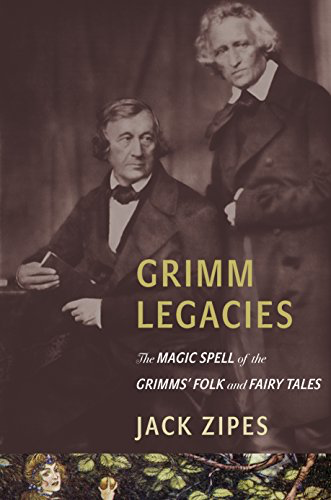
3:16: Did the Grimms themselves take part in the hyping of the stories for a global market, and how do Americans and Germans differ in what they take from the tales? Is it fair to say that Americans tend to only find the kitsch in them, or lionize them?
JZ: No, I don’t think that it is fair to say that Americans only find kitsch in the tales or that they lionize them. Since I have lived in and visited many different states in America and also in North America, especially Canada, I am careful to make generalizations about Americans. There are huge differences between Minnesotans, where I presently live. And New York, where I was born and grew up. As Bourdieu has pointed out, we all develop a habitus in our childhood that stamps us for the rest of our lives. Sometimes it is enabling, sometimes it is like a prison. I myself will always remain a New York Jew, fortunately tinged by other societies in America where I have worked and lived.
3:16: How Six Made Their Way In The World’ is for you one of the great tales and is also the foundation for many contemporary stories, particularly those used in film – we wouldn’t have Marvel and DC superheroes, we wouldn’t have Clint Eastwood’s spagetti westerns and Outlaw Josey Wales, The Seven Samurai, The Magnificent Seven etc etc. Tell us about this tale and its legacies and why you find it so powerful.
JZ: Yes, I love this tale and have written an essay about it. Here is a part of the essay that will answer your question: Another confession: "How Six Made their Way in the World" is my favorite Grimms' fairy tale, and yet, to my dismay, it is barely known today, or it is known through hundreds of variants such as "The Fool of the World and the Flying Ship," which has been published as a children's book, included in anthologies, and adapted as a film in the twentieth century.[i] However, the Grimms' "How Six Made their Way in the World" has rarely been published separately as a picture book for young or older readers in any language.[ii] Nor has it been made into a film. The Brothers Grimm obtained their version orally from the gifted storyteller, Dorothea Viehmann, and published it first in the second edition of Children's and Household Tales of 1819; and it was not altered very much by Wilhelm in the following years so that it remained essentially the same text in the final publication of the Grimms' tales in 1857. It begins this way:
'Once upon a time there was a man who had mastered all kinds of skills. He had fought in the war and had conducted himself correctly and courageously, but when the war was over, he was discharged and received three pennies for traveling expenses.
'Just you wait!' he said. "I won't put up with that. If I find the right people, I'll force the king to turn over all the treasures of his kingdom to me."[iii]
So he goes full of rage into the forest, and sure enough he finds five extraordinary humans who agree to serve him: a strong man, who can easily tear up trees and carry them; a sharpshooter, who can hit a fly on a branch two miles away; a blower, who can make the sails of windmills rotate two miles away; a runner, who flies faster than birds when he unbuckles one leg; and a man who can make the air freeze if he takes off his cap.
Once they are together, they travel to the city where the king has proclaimed that anyone who can beat his daughter in a foot race can have her for his wife. However, if he loses, he will be beheaded. The discharged soldier asks the king if he can use his servant the runner, and king agrees saying that both will lose their heads if the runner is defeated. Of course, he doesn't lose thanks to the sharpshooter who shoots a rock out from beneath his head when the runner decides to rest mid-way through the race and falls asleep with his head on a rock. However, the princess refuses to marry a common discharged soldier, and the king pretends to invite them to celebrate their victory with a feast in an iron room. Then the king locks the room and orders the cook to heat it to roast them to death. Little does the king know that the man with the cap can cool off the room, and in the morning the six heroes are well and alive. Once more, the king tries to prevent the discharged soldier from marrying his daughter, and instead of his daughter, he offers him all the gold he can carry from the castle. The soldier agrees but asks for two weeks to gather together all the tailors in the realm so that they can make the largest sack in the world for the strong man to carry away the gold. Indeed, not only does the strong man carry off all the gold but also the entire royal treasure. Infuriated, the king sends his cavalry after the six heroes, but the blower sends them dancing into the air and allows only a brave sergeant to return to the king to warn him that the blower will blast any regiment that the king sends. So, the king gives up, and the six bring their treasure back home and divide it among themselves and live happily until they die.
Hans-Jörg Uther calls this tale a Schwankmärchen (a farce or tall tale) and cites similar types in the Grimms' collection such as "The Six Servants," "The Golden Goose," "The Gnome," "The Four Skillful Brothers," and "Strong Hans,"[i] but to label the tale a farce is to this miss the point of this serious story about cooperation to attain justice and its significance in the other tales that he cites as well. As we know, there are a number of ways that one can name, interpret, and classify tale types, and to my mind, "How Six Made their Way in the World" is clearly a story of class warfare and revenge or, put more positively a wish-fulfillment tale of social justice, probably first told by underdogs or exploited soldiers. It has its light side to it, as Uther astutely points out, but it is also revolutionarily comic, a day-dream shared by commoners, a carnevalesque folk tale. In his most recent book about the informants of the Brothers Grimm, Heinz Rölleke writes that Viehmann suffered a good deal in her life and had a predilection for telling tales of social justice, generally tales in which young women manage to find happiness.[v] In this case it is a discharged soldier, who needs extraordinary help.
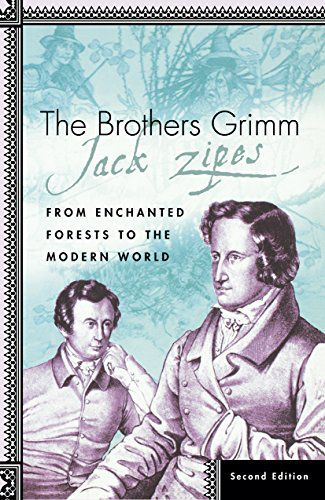
There are ten tales about soldiers in the Grimms' Kinder- und Hausmärchenthat reflect how common soldiers were exploited by their superiors and how the common soldiers, generally peasants, sought some kind of retribution. I have discussed the role of discharged soldiers briefly in my book The Brothers Grimm: From Enchanted Forests to the Modern World [vi] and pointed out that they are fearless and virtuous and seek most of all to re-integrate themselves into society after serving in a war. A couple of these tales were contributed by an elderly ex-soldier Johann Friedrich Krauss, who exchanged his stories with the Grimms for leggings. Krauss was not an exception, for many ex-soldiers or soldiers could tell tales. Johann Wilhelm Wolf, a neglected German folklorist, systematically collected tales from soldiers in the region near Darmstadt in 1847 and published them as Deutsche Hausmärchenin 1851. They, too, reflect dreams and wishes of common soldiers for some kind of social justice.[vii] Indeed, it is very important to try to trace tales to their informants to understand their ideological perspective, especially since there has been relatively little study of soldier tales and wish-fulfillment in the Grimms' collection and other German collections of the nineteenth century. Here, however, I am more interested in the role that cooperation plays in tale types that celebrate collective action against tyranny and injustice, whether the oppressed protagonist is a soldier or not.
"How Six Made their Way in the World" (ATU 513A) has been categorized as part of the cycle ATU 513, "The Extraordinary Companions," and some folklorists have also related it to ATU 313 "The Magic Flight," also called "The Obstacle Flight." The so-called heroes or protagonists of the numerous hybrid tales are not only soldiers, but wronged princes, third maltreated sons, bumbling dumblings, disguised princesses, maltreated daughters, simple peasants and craftsmen, and yes, discharged soldiers. Without the help of extraordinary human companions and some amazing talking animals or the intercession of a superhuman deity, they cannot succeed in their quest to gain respect for their integrity and to right wrongs done to them. In the Grimms' final notes to the 1857 edition of Children's and Household Tales, Wilhelm makes clear that he and Jacob knew several German variants as well as literary tales written by Giambattista Basile and Mme d'Aulnoy. It does not appear that they were familiar with the epic poem Argonauticaby Apollonius of Rhodes written in the third century BCE.
However, it is clear that this poem along with oral tales and legends played a major role in the formation of folk and fairy tales that gave rise to "How Six Made their Way in the World" and hundreds if not thousands of tales about the cooperation of superheroes, and I want to briefly recall the interesting ways that authors like Apollonius, Giovanni Sercambi, Giambattista Basile, Mme d'Aulnoy, and Peter Christen Asbjørnsen varied the quests of their protagonists while always insisting that no hero can succeed without the cooperation of extraordinary companions. Then I shall conclude by exploring if not speculating why our disposition to cooperate has generated memetically a long tradition of similar tales and why the Grimms themselves were "driven" to emphasize cooperation throughout their lives.
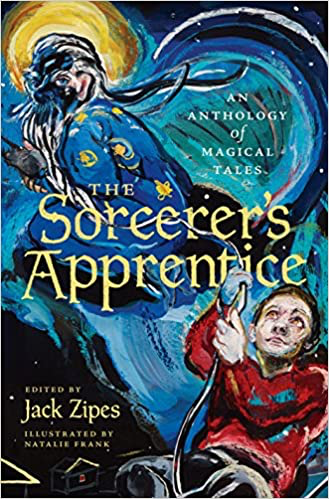
3:16: You see the Sorcerer’s Apprentice as a ‘memeplex’ of the ‘Humiliated Apprentice’ story and the ‘Rebellious Apprentice’ story. Can you sketch for us what these are and how they stand in opposition to each other, and tell us a little about the Krabat stories that you use to illustrate them and their use of magical transformations?
JZ: As you well know, I have written an entire book about “The Sorcerer’s Apprentice,” and gathered numerous tales (perhaps well over 500 different versions of the tale type that I could not include in my anthology). Frankly, I see thise” tale type which includes tales in which apprentices, deprived of full knowledge by the sorcerer either kill the sorcerer or is transformed into a “slave” to serve the the sorcerer. This is basically the major conflict that all the people in the world face as they are assimilated in a society. Depending on who educates the young, the society will become either fascist or democratic or a mixture of the two. Hence, the appeal of the sorcerer’s apprentice tales today and our mission: to do away with dictators and oligarchs and to bring greater justice into our godforsaken world.

3:16: Reverance for magic in our lives and not just in stories is something you are keen to transmit and you cite the Sanskrit Hindu story ‘The Youth Who Went Through the proper ceremonies. Why Did he Fail To Win the Magic Spell?’ to illustrate your point. Can you tell us about this story and also why you think reverence for magic is needed in our lives? For many people this might strike them as a step backwards away from science and fact checking – isn’t this the world of fake news and conspiracy theories which authoritarian tyrants like to exploit for their own nasty ends? Wasn’t the truth and science supposed to be setting us free, not magic?
JZ: To answer this question, I would need to write a book or talk for ten hours. And, of course, you don’t want that! Simply put, magic is knowledge! Magic enables us to transform ourselves and the world and is constituted by scientific ingredients that causes changes of all kinds. Fairy tales are based on transformation. People, animals, and even plants are constantly changing in fairy tales, and these transformations indicate the way we must respond to our environment and society. We all need serendipity and magic in our lives so we can become what our heart urges us to become.
3:16: A fascinating move Bob Dylan has done recently is take classic crooning songs from Frank Sinatra and others and re-sing them to find hidden folk tale roots in them. So many of the tales you’re writing about have also been commercially and ideologically transmogrified and layered over with the result that their legacies seem at best ambivalent. Do you think there is still a liveliness to the tales and stories that can still be made to provoke despite the perversions, or is it a tradition that is being strangled to death?
JZ: First, I must say that I am not a great fan of Bob Dylan, and I am not certain whether he is perverting folk tales. He doesn’t interest me. But what does interest me is the manifold way creative people continually adapt and use fairy tales in their art, in their lives, and in their analyses of world problems and conflicts. I don’t think that fairy tales will ever be strangled to death because, as memes, we need them to understand who we are and where we are going.
3:16: Finally, for the readers here at 3:16am, are there five books other than your own that you could recommend that would take us further into your fascinating world?
JZ: Really difficult to say because I have a “weird” taste that keeps changing. Perhaps I should just name several of the books from the first half of the twentieth century which I am unburying and republishing in the tiny press, Little Mole and Honey Bear that I founded two years ago. These books still speak to me and our times, and I am going to do my best to re-publish them until I am buried.
I am not certain when the urge or itch began, but about ten years ago, when I founded the series of Oddly Modern Fairy Tales with Hanne Winarsky, then senior editor at Princeton University Press, I began to “rebel” against the classical well-known fairy tales, not to mention the insipid Disney fairy-tale films. I realized that they had become stale and commodified and had no historical or social relevance. Indeed, the fairy tale is a mysterious hybrid genre and has secrets about our past and present to reveal if you value each tale’s historical idiosyncrasies. As a scholar of these tales, I realized you cannot deal with present socio-political-cultural conditions unless you have a firm grasp on historical transformation. .Consequently, all my concerns as a scholar of folklore and fairy-tale studies and, also as a writer and translator of tales, made a huge U-Turn about 2008. Indeed, I began to search and research the gaps of the past that we needed and still need to fill to make the present more substantial and pave the way for a better future.
In the particular case of folk and fairy tales, this led me to try to discover and uncover highly significant writers and illustrators of fairy tales in the nineteenth and twentieth centuries. Since I have always been a library nerd, a used-book pack rat, and a flea market junky, it was not difficult for me to sniff out numerous neglected authors and their works, both for adults and for young readers. In the course of ten years, I have been fortunate to find amazing collections of fairy tales for my Princeton series and now many more for young readers written by well-known and not so well-known authors and illustrators such as Ethel Carnie, Paul Vaillant-Courtier, Heywood Broun, Norbert Lebermann, Lisa Tetzner, Hermynia zur Mühlen, Frederick Le Gros, Jacques Prévert, Giovannino Guareschi, Naomi Mitchison, Emery Kelen, and Gianni Rodari.
Most of their tales are in the public domain and have been ignored for all sorts of reasons – politically too radical, much too experimental, very provocative, and so on. Yet, it is clear that the radical stories challenged the established ideologies in every society in the world, and that they were uncomfortable for publishers to re-print after publication. The excellent publisher Gollancz in London sought at one point to develop a series of radical children’s literature in the 1930s but failed because of the anti-socialist forces and the rise of fascism. Nevertheless, there were many successes in many different countries from 1900 to 1950.
As Kimberley Reynolds notes in her superb book, Left Out: The Forgotten Tradition of Radical Publishing for Children in Britain 1910-1949, “Social transformation is not simply a matter of desire and legislation; it requires new visions which themselves depend on new forms of knowledge and new ways of seeing the world. Radical children’s literature drew on the latest ideas from the spheres of science, politics, economics, pedagogy, social policy, literature, and the fine and applied arts to encourage readers to look with fresh eyes at how people were living, interacting, and organizing themselves. It offered readers a vision of the children and young people who would inhabit a new world and who were at the centre of efforts to reform and regenerate society; indeed, the twentieth century was to be ‘the century of the child,’” (1).
It was not only in Britain, however, that radical children’s literature asserted itself, but also in Germany, France, Russia, and many other European countries as well as North America. Hope filled the pages of the published books, and I believe that it is an important time to bring back the hope to address many of the same social and economic conditions and political conflicts that are facing young people today.
Consequently, in contrast to the series that I developed at Princeton University Press that was focused on adult readers, I want to edit series of radical books (largely fairy-tale collections, fantasy novels) more focused on young readers. I also want to retain the original illustrations which are unique and often involve great artists like George Grosz. These books deserve to be rediscovered because they speak to our times.
The series could be called Changing the World through Fairy Tales, 1900-1956, or Speaking Truth through Fairy Tales, 1900-1956. Almost all the books are in the public domain. Many have been translated and published in English. I can translate all tales and books from German, French, and Italian, which have not been translated such as Paul Vaillant-Courtier’s Jean sans Pain.
Although there is a deep-seated scholarly interest invested in this series, I do not intend the series to be “scholarly”. I want to follow a new urge or itch. Instead, I should like to ask some of the leading writers of today to write a short compact preface or afterword of about five pages addressing the contemporary relevance of the book. Otherwise, I should like graphic designers to design the books so that they have an appeal for young readers. In some cases, where there are no illustrators, I should like to ask contemporary illustrators to provide new images. With regard to the size of the books, I’d like all of them to be 8” x 6”, similar to the recent children’s book, Fearless Ivan and His Faithful Horse Double-Hump, which I recently published with the U of Minnesota Press.
Some of the books I want to include are:
Ethel Carnie, The Lamp Girl and Other Stories (1913)
Paul Vaillant-Courtier, Jean sans Pain(1921)
Heywood Broun, The Fifty-First Dragon (1921)
Norbert Lebermann, Blaue Blumen (New German Fairy Tales, 1927)
Lisa Tetzner, Hans Urian oder die Geschichte einer Weltreise (Hans Sees the World (1931)
Hermynia zur Mühlen, Es war einmal … und es wird sein(the Castle of Truth and Other Revolutionary Fairy Tales, 1929)
Ferdinand Bastian, Märchenland: Originalmärchen(The Realm of Fairy Tales, 1932)
Frederick Le Gros and Ida Clark, The Enchanted Fishes and Other Stories(1936)
Frederick Le Gros and Ida Clark, The Adventure of the Little Pig and Other Stories (1937)
Dorothy Burroughes, Teddy, the Little Refugee Mouse (1940)
_________________. The Magic Seed (1945)
Antoniorrobles, Tales of Living Playthings (1938)
Emery Kelen, Yussuf the Ostrich (1942)
Maurice Druon, Tistou les pouces verts(Tistou of the Green Thumbs, 1957)
Jacques Prévert, Contespour enfants pas sages (1963)
Giovannino Guareschi, La Favola di Natale (The Fairy Tale of Christmas (1971)
Naomi Mitchison, Five Men and a Swan (1957), The Fairy Who Couldn’t Tell a Lie (1963). or The Brave Nurse and Other Stories (1977)
Gianni Rodari, Il romanzo di Cipollino (The Novel of the Little Onion, 1951) or Gelsomino nel paese di Bugiardi (Gelsomino in the Country of Liars, 1958
Notes
[i] See Arthur Ransome. The Fool of the World and the Flying Ship, Illustr. Uri Shukevitz (New York: Farrar, Straus and Giroux, 1968) and Valeri Gorbachev, The Fool of the World and the Flying Ship: A Ukrainian Folk Tale, Illustr. Valeri Gorbachev (New York: Starbright Books, 1998). See also the remarkable film, The Fool of the World and the Flying Ship(1989), directed by Francis Vose, written by John Hambley, and produced by Chris Taylor. The film was narrated by David Suchet.
[ii] For some of the more interesting books for young readers, see: Sechse kommen durch die ganze Welt: Ein Märchen der Gebrüder Grimm, Illustr. Jürg Obrist. Zurich: Schweizerische Bibliothek für die Blinden, 1960); Arthur Ransome, The Fool of the World and the Flying Ship, Illustr. Uri Shulevitz (New York: Farrar, Straus and Giroux, 1968); Pat O'Shea, Finn MacCool and the Small Men of Deeds. Illustr. Stephen Lavis (New York: Holiday House, 1987); Valeri Gorbachev, The Fool of the World: A Ukrainian Folk Tale, Illustr. Valeri Lavis (Star Bright Books, 1998)
[iii] Jacob and Wilhelm Grimm. The Complete Fairy Tales of the Brothers Grimm, Ed. and trans. Jack Zipes, Illustr. John B. Gruelle, 3rd rev. ed. (New York: Bantam, 2003): 253
[iv] Hans-Jörg Uther, Handbuch zu den "Kinder- und Hausmärchen der Brüder Grimm: Entstehung -- Wirkung -- Interpretation(Berlin: Walter de Gruyter, 2008): 169-71
[v] Heinz Rölleke, ed., Es war einmal. . . Die wahren Märchen der Brüder Grimm und wer sie ihnen erzählte, Illustr. Albert Schindehütte (Frankfurt am Main: Eichorn, 2011): 115-52
[vi] Jack Zipes, The Brothers Grimm: From Enchanted Forests to the Modern World, 2nd rev, ed. (New York: Palgrave, 2002): 80-84
[vii] See the modern edition Johann Wilhelm Wolf, Verschollene Märchen (Nordlingen: Franz Greno, 1988), first published as Deutsche Hausmärchen (Göttingen: Dieterich’sche Buchhandlung, 1851)
Books written or edited by Jack Zipes Include:
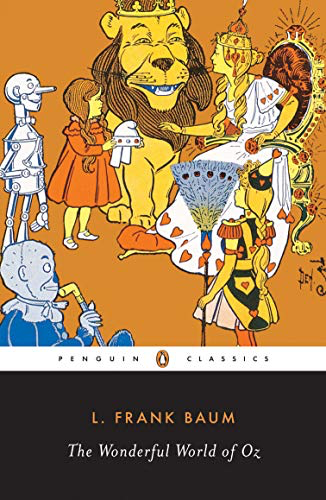
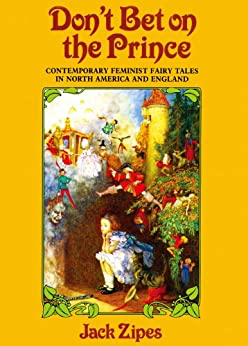
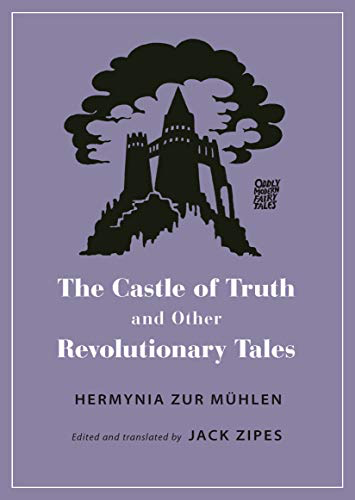
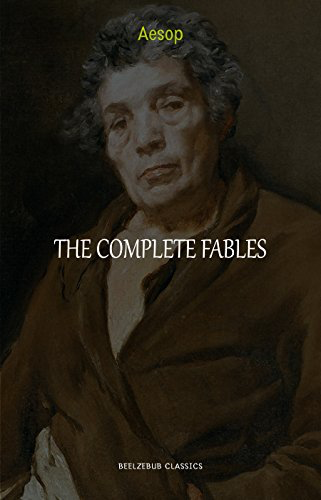

About the Interviewer
Richard Marshall is biding his time.
He has a couple of reviews of Zipes's books here:
The Curious Legacies of the Brothers Grimm here
Subversive Fairies here
